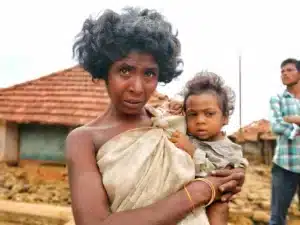If health services are not improved, around 59 million children and youth will die before 2030 and nearly 16 million babies will be lost to stillbirth, says UN report
Access to and availability of quality health care continues to be a matter of life or death for children globally.
 Most child deaths occur in the first five years, of which half are within the first month of life. For these youngest babies, premature birth and complications during labour are the leading causes of death. Similarly, more than 40 percent of stillbirths occur during labour – most of which are preventable when women have access to quality care throughout pregnancy and birth. For children that survive past their first 28 days, infectious diseases like pneumonia, diarrhoea and malaria pose the biggest threat.
Most child deaths occur in the first five years, of which half are within the first month of life. For these youngest babies, premature birth and complications during labour are the leading causes of death. Similarly, more than 40 percent of stillbirths occur during labour – most of which are preventable when women have access to quality care throughout pregnancy and birth. For children that survive past their first 28 days, infectious diseases like pneumonia, diarrhoea and malaria pose the biggest threat.
With 77 percent of all stillbirths in 2021 occurring in sub-Saharan Africa and South Asia, and nearly half of all stillbirths happening in sub-Saharan Africa, the risk of a woman having a stillborn baby in sub-Saharan Africa is 7 times more likely than in Europe and North America.
“It is grossly unjust that a child’s chances of survival can be shaped just by their place of birth, and that there are such vast inequities in their access to lifesaving health services,” says Dr Anshu Banerjee, Director for Maternal, Newborn, Child and Adolescent Health and Ageing at the World Health Organization (WHO) as the United Nations Inter-agency Group for Child Mortality Estimation (UN IGME) released a report Tuesday January 10.
The report estimated 5 million children died before their fifth birthday and another 2.1 million children and youth aged between 5–24 years lost their lives in 2021.
In a separate report also released recently, the group found that 1.9 million babies were stillborn during the same period. “Tragically, many of these deaths could have been prevented with equitable access and high-quality maternal, newborn, child and adolescent health care,” says Banerjee.
“Children everywhere need strong primary health care systems that meet their needs and those of their families, so that – no matter where they are born – they have the best start and hope for the future.”

Children continue to face wildly differentiating chances of survival based on where they are born, with sub-Saharan Africa and southern Asia shouldering the heaviest burden, the reports show. Though sub-Saharan Africa had just 29 percent of global live births, the region accounted for 56 percent of all under-5 deaths in 2021, and southern Asia for 26 percent of the total. Children born in sub-Saharan Africa are subject to the highest risk of childhood death in the world – 15 times higher than the risk for children in Europe and northern America.
“Every day, far too many parents are facing the trauma of losing their children, sometimes even before their first breath,” said Vidhya Ganesh, UNICEF Director of the Division of Data Analytics, Planning and Monitoring. “Such widespread, preventable tragedy should never be accepted as inevitable. Progress is possible with stronger political will and targeted investment in equitable access to primary health care for every woman and child.”
However, the reports say under-5 mortality rate fell by 50 percent since the start of the century, while mortality rates in older children and youth dropped by 36 percent, and the stillbirth rate decreased by 35 percent. This can be attributed to more investments in strengthening primary health systems to benefit women, children and young people.
But the gains have reduced significantly since 2010, and 54 countries will fall short of meeting the Sustainable Development Goals target for under-5 mortality.
“If swift action is not taken to improve health services, warn the agencies, almost 59 million children and youth will die before 2030, and nearly 16 million babies will be lost to stillbirth,” the report adds.
Read More: https://h-leads.com/early-marriages-in-up-bihar-wreck-mental-health-of-girls-study/


















Add Comment